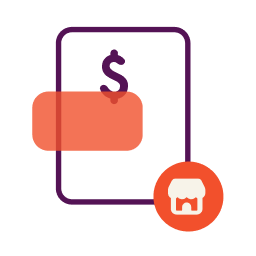Advertiser & Editorial Disclosure
You’ve probably heard of SBA loans. Perhaps you’ve also heard they can be a very attractive source of financing for small businesses, with low rates and favorable payment terms. But while you may be intrigued at the prospect of getting one, you are probably also a little intimidated. What does it take to actually land an SBA loan?
Here we break down the process of getting an SBA loan step by step. We will focus on the most popular SBA loan program: SBA Advantage Loans (also known as 7(a) loans). There are other SBA loan programs that may be right for you, including microloans or SBA Grow Loans (504 loans).
Step 1: Determine if an SBA Loan Is Right for You
SBA loans have some of the most attractive terms among small business loans. “If (you) can get an SBA loan, take it,” says Evan Singer, president and CEO of SmartBiz, which aims to simplify the process of applying for and getting SBA loans. That’s because these loans offer the “best interest rate, lowest monthly payment, and longest term,” he says.
But there are some caveats.
Are you willing to give a personal guarantee? Applicants who own 20% or more of the business, as well as those in key management positions, will be required to sign a personal guarantee, meaning the lender can try to collect from the personal assets of the borrower, and their personal credit could be damaged, if they default on the loan. Collateral may also be required.
Do you have decent credit? As we’ll explain in a moment, many loans in this program are prescreened using a FICO score developed just for small businesses. If your credit is poor, you may need to consider other business financing sources that either don’t review personal credit, or that are available to entrepreneurs with low credit scores.
Can you afford to make the payments? Your business’s ability to repay the loan will be evaluated in the loan application process. “They will look at the cash flow of the business (itself), and that of the business and the business owner, combined,” says Singer. If your cash flow is tight and the loan won’t help increase revenue for a while, you may need to look to other sources that don’t require you start making those payments right away, such as grants or crowdfunding.
Do you have time to wait for a decision? SBA loan applications can often take one to three months to be approved, though there are lenders such as Smartbiz that aim to significantly shorten that timeframe. (Additionally, SBA Express Loans offer a response within 36 hours.) If you need funding “yesterday,” you may have to seek out other fast financing sources like credit cards or even a merchant cash advance.
Step 2: Make Sure You Are in the Ballpark
There’s no point in wasting a lot of time if you aren’t going to meet basic requirements. So understand these before you decide whether to proceed.
In order to qualify for an SBA loan under this program, you must operate a small, for-profit business that is engaged in business (or plans to) in the U.S. or its possessions. You must have reasonable invested equity in the business and have tapped other resources, including personal assets. You need to be able to show that you need the funds, and that you’ll use them for a sound business purposes.
Sound good so far? Then you should also check your FICO SBSS score, which is a FICO score developed specifically for small business. The lender must obtain a FICO SBSS score for loans of $350,000 or less in the 7(a) program. This score takes into account both the personal credit of the owner as well as business credit. A score of 140 (out of a highest possible score of 300) is required to pass this step (called a “prescreen”). Our experience at Nav is that most lenders want to see scores of 160 or higher. If your score is not high enough, your application will have to go through a more involved review.
Dealbreakers
Note there are some deal breakers that will make you ineligible for a loan. (These apply to any principal with 20% or more ownership in the business).
You will not be eligible if:
- You are delinquent on other debts owed to the federal government (such as federal student loans, for example).
- You caused the government to incur a loss on a previous business debt.
- You are currently incarcerated, on parole, on probation or are a defendant in a criminal proceeding.
- Your business operates in an excluded industry, such as life insurance companies, businesses that primarily make loans, pyramid-type companies or those primarily engaged primarily in religious or political activity, among others.
Tip: Check your firm’s SIC and/or NAICS code as reported on your business credit reports, to make sure your firm hasn’t been incorrectly categorized. Mistakes happen and you do not want your business to be misidentified as operating in an excluded category. You can get a free personal and business credit report summary free from Nav.
Step 3: Find the Right Lender
The SBA does not make loans; it guarantees them. You will have to work with an individual lender, and there are many financial institutions that offer them — from credit unions to large national banks. Just because you can’t get an SBA loan from one lender doesn’t mean you can’t get one from another. “Banks say yes and no to different things,” says Singer. “The SBA has specific requirements but the banks may add their own requirements on top of those requirements.”
You can talk to individual lenders or you can work with a company that helps match SBA borrowers to lenders. Your local Small Business Development Center is another source of free and low-cost advice, and may offer SBA loan workshops. (Nav helps small business owners find financing, including SBA loans.)
SBA Loan by SmartBiz
Step 4: Apply
There’s no getting around it; the paperwork required for an SBA loan is going to be more involved than some other types of small business financing. But the payoff will hopefully be worth it. Among the paperwork you will need to fill out:
- SBA Loan Application
- Personal Background and Financial Statement
- Business Financial Statements (Profit & Loss, 1-year projected financial statement)
- Ownership & Affiliations
- Business Certificate/License
- Loan Application History
- Income Tax Returns (3 years, personal and business)
- Resumes for each principal of the business
- Business Overview and History, including an explanation of how loan will help the business
- Business Lease (if applicable)
- Purchase Information (if purchasing a business, additional information is required)
Additional information may be required as well. Some lenders may require a business plan, and if you are going to use the proceeds to pay off debt, the lender will need a copy of the promissory note plus the loan payoff amount.
After you have submitted your complete package, you’ll wait for a decision. Some lenders can take weeks or months to make that decision, though a few have a turnaround times of as little as week.
If you secure your SBA loan, congratulations! Make repayment a priority. Even though the loan is guaranteed by the SBA, if you default the government will be able to collect from you personally. The federal government generally has greater collection powers than private debt collectors, and may intercept your federal income tax refund or part of your Social Security benefits to collect.
What if you don’t get the loan? You’ll want to explore other options. There may be other financing or funding options that can work for your business. Nav’s free ebook The Ultimate Guide to Financing Your Business in 2016 can help.
This article was originally written on March 1, 2017 and updated on September 9, 2022.




Have at it! We'd love to hear from you and encourage a lively discussion among our users. Please help us keep our site clean and protect yourself. Refrain from posting overtly promotional content, and avoid disclosing personal information such as bank account or phone numbers.
Reviews Disclosure: The responses below are not provided or commissioned by the credit card, financing and service companies that appear on this site. Responses have not been reviewed, approved or otherwise endorsed by the credit card, financing and service companies and it is not their responsibility to ensure all posts and/or questions are answered.